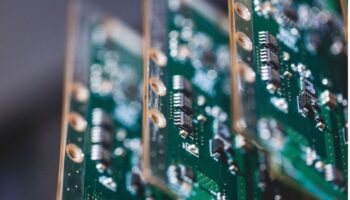High-Performance Computing (HPC) is evolving rapidly, driven by the growing need to process vast amounts of data, perform complex simulations, and accelerate the development of artificial intelligence (AI). At the heart of this transformation is the increasing adoption of bare metal GPU instances, a technology that offers unparalleled performance, flexibility, and control for HPC applications. Bare metal GPU instances combine the raw power of Graphics Processing Units (GPUs) with the flexibility of bare metal servers, creating a formidable tool for organizations that require dedicated resources for their most demanding workloads.
1. The Rise of GPU-Powered HPC
Traditionally, Central Processing Units (CPUs) have been the workhorse behind most computing tasks. However, as data sets become more complex and tasks like machine learning and deep learning grow in scope, GPUs have taken center stage in HPC environments. GPUs excel in parallel processing, allowing them to handle the heavy computational demands of AI, simulations, and large-scale data processing tasks far more efficiently than CPUs. GPU clusters, which aggregate multiple GPUs to work together, further enhance this capability, providing immense computational power for demanding workloads.
Bare metal GPU instances take this capability even further by offering users exclusive access to GPU resources, eliminating the performance overheads and latency often associated with virtualized environments. This trend is accelerating as industries ranging from healthcare and finance to autonomous vehicles and aerospace increasingly rely on HPC to fuel innovation.
2. AI and Machine Learning Driving GPU Demand
One of the key drivers of the future of bare metal GPU instance technology is the exponential growth of AI and machine learning workloads. Training AI models, especially deep learning networks, requires immense computational power, and GPUs are uniquely suited for these tasks due to their ability to perform thousands of operations simultaneously.
Bare metal GPU instances allow organizations to tap into this power without the limitations imposed by virtualization or multi-tenant environments. This is particularly important for AI startups and research labs that require dedicated hardware to handle large-scale training tasks without interference or sharing resources with other users. As AI models become more complex, requiring more data and computational power, the demand for dedicated GPU instances will continue to rise.
3. Bare Metal GPU Instances and Edge Computing
Another trend reshaping HPC is the convergence of edge computing and bare metal GPU instances. Edge computing refers to the practice of processing data closer to its source (e.g., IoT devices or sensors) rather than relying solely on centralized data centers. This approach reduces latency and bandwidth usage, which is critical for applications like autonomous vehicles, smart cities, and real-time analytics.
Bare metal GPU instances can be deployed at the edge, providing the computational horsepower needed to process large data sets in real-time. For example, an autonomous vehicle relies on complex algorithms to interpret data from cameras, LIDAR sensors, and other input sources to make split-second decisions. The combination of edge computing and bare metal GPU instances ensures that these computations happen quickly and efficiently, even in challenging environments with limited connectivity to the cloud.
4. GPU-Accelerated Cloud Platforms
While bare metal GPU instances offer raw, dedicated power, many organizations are looking to leverage the flexibility and scalability of cloud platforms. This has led to a rise in GPU-accelerated cloud platforms, where cloud service providers offer bare metal instances with GPU capabilities as part of their infrastructure as a service (IaaS) offerings.
This hybrid approach allows businesses to scale up their HPC workloads without the need to invest heavily in on-premise infrastructure. By combining the flexibility of cloud computing with the power of bare metal GPU instances, organizations can scale their computational needs dynamically, responding to changing demands in real-time.
5. Sustainability and Energy Efficiency in HPC
With great computational power comes great energy consumption. As bare metal GPU instances and HPC workloads scale up, so does the need for more energy-efficient solutions. This has led to a growing emphasis on sustainable computing, with companies seeking to balance the need for high performance with environmental concerns.
Next-generation GPUs are being designed with energy efficiency in mind, using techniques like dynamic voltage scaling and better cooling systems to reduce power consumption. Additionally, organizations are increasingly turning to renewable energy sources to power their HPC infrastructure, ensuring that the future of HPC is as green as it is powerful.
6. The Democratization of HPC and GPU Technology
Historically, HPC was the domain of large enterprises and research institutions with the resources to invest in expensive supercomputers. However, the rise of bare metal GPU instances is democratizing access to HPC capabilities, making it possible for startups, small businesses, and even individual researchers to leverage the power of GPUs for their computational needs.
The future of High-Performance Computing is bright, and bare metal GPU instances are at the forefront of this revolution. As the demand for AI, machine learning, edge computing, and real-time data processing grows, so too will the need for dedicated, high-performance GPU infrastructure. With advances in GPU technology, sustainability initiatives, and cloud platforms, bare metal GPU instances are set to become a critical enabler for the next generation of innovation across industries. Whether you’re training a deep learning model, running complex simulations, or processing real-time data at the edge, the future of HPC lies in the power and flexibility of bare metal GPU instance technology.





